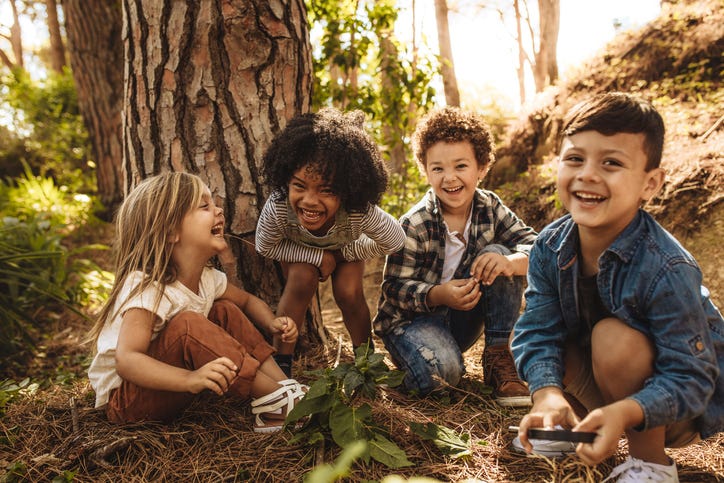The Power of Play
“Sixty minutes of daily unstructured free play is essential to children’s physical and mental health.” — The American Academy of Pediatrics

It’s well documented that young children have a curiosity that rivals even the best scientists and innovators, yet we quash this trait with heavily structured test-driven lessons that leave little leeway for experimentation and discovery. Schools have removed play and curiosity almost entirely from the curriculum. Why? It can’t be assessed or quantified into a grade.

Treehugger.com reported in 2016 that prisoners in a maximum security prison in the U.S. are guaranteed two hours outdoors every day;a worldwide survey of 12,000 parents found that one-third of kids spend less than an hour outside a day. The Washington Post reported in 2018 that U.S. children spend 5–8 hours in front of a screen.We often hear, “It’s not the school’s place to do what parents should already be doing.” But this is one more case of not being sensitive of the challenges, trauma, or violence a child may face at home. The one constant they can count on is their school environment.
With the looming prospects of climate change and its effects on habitats and species, our engagement with the natural world is more important than ever. Getting our youngest citizens to better appreciate and learn from the natural environment is vital to their physical and mental health, says Washington, D.C. pediatrician Dr. Robert Zarr, founder of the non-profit Park Rx America.
Our schools and campuses can be resources for creating natural environments that can double as outdoor classrooms for exploration, discovery, and learning through school gardens, arboretums, plant pollinator or rain gardens, and natural playgrounds. The payoff can be students who are happier, healthier, and more focused and able to learn young people who value their world and everything in it.

